1. Scott RM, Smith ER. Moyamoya disease and moyamoya syndrome. N Engl J Med. 2009; 360:1226–1237. PMID:
19297575.

2. Takeuchi K, Shimizu K. Hypogenesis of bilateral internal carotid artery. Shinkei. 1957; 9:37–43.
3. Cho HJ, Jung YH, Kim YD, Nam HS, Kim DS, Heo JH. The different infarct patterns between adulthood-onset and childhood-onset moyamoya disease. J Neurol Neurosurg Psychiatr. 2011; 82:38–40. PMID:
20587492.

4. Ikezaki K, Matsushima T, Kuwabara Y, Suzuki SO, Nomura T, Fukui M. Cerebral circulation and oxygen metabolism in childhood moyamoya disease: a perioperative positron emission tomography study. J Neurosurg. 1994; 81:843–850. PMID:
7965114.

5. Abete P, Della-Morte D, Gargiulo G, Basile C, Langellotto A, Galizia G, et al. Cognitive impairment and cardiovascular diseases in the elderly: a heart-brain continuum hypothesis. Ageing Res Rev. 2014; 18:41–52. PMID:
25107566.

6. Hynes SM, Fish J, Manly T. Intensive working memory training: a single case experimental design in a patient following hypoxic brain damage. Brain Inj. 2014; 28:1766–1775. PMID:
25207877.

7. Kim JM, Lee SH, Roh JK. Changing ischaemic lesion patterns in adult moyamoya disease. J Neurol Neurosurg Psychiatr. 2009; 80:36–40. PMID:
18450791.

8. Kuroda S, Houkin K. Moyamoya disease: current concepts and future perspectives. Lancet Neurol. 2008; 7:1056–1066. PMID:
18940695.

9. Williams TS, Westmacott R, Dlamini N, Granite L, Dirks P, Askalan R, et al. Intellectual ability and executive function in pediatric moyamoya vasculopathy. Dev Med Child Neurol. 2012; 54:30–37. PMID:
22117564.

10. Festa JR, Schwarz LR, Pliskin N, Cullum CM, Lacritz L, Charbel FT, et al. Neurocognitive dysfunction in adult moyamoya disease. J Neurol. 2010; 257:806–815. PMID:
20033200.

11. Calviere L, Catalaa I, Marlats F, Januel AC, Lagarrigue J, Larrue V. Improvement in cognitive function and cerebral perfusion after bur hole surgery in an adult with moyamoya disease: case report. J Neurosurg. 2011; 115:347–349. PMID:
21529135.
12. Jung HY, Park BK, Shin HS, Kang YK, Pyun SB, Paik NJ, et al. Development of the Korean Version of Modified Barthel Index (K-MBI): multi-center study for subjects with stroke. J Korean Acad Rehabil Med. 2007; 31:283–297.
13. Kim YH, Shin SH, Park SH, Ko MH. Cognitive assessment for patient with brain injury by computerized neuropsychological test. J Korean Acad Rehabil Med. 2001; 25:209–216.
14. Weinberg DG, Arnaout OM, Rahme RJ, Aoun SG, Batjer HH, Bendok BR. Moyamoya disease: a review of histopathology, biochemistry, and genetics. Neurosurg Focus. 2011; 30:E20. PMID:
21631222.

15. Hayashi K, Horie N, Izumo T, Nagata I. A nationwide survey on unilateral moyamoya disease in Japan. Clin Neurol Neurosurg. 2014; 124:1–5. PMID:
24976021.

16. Milner B. Some cognitive effects of frontal-lobe lesions in man. Philos Trans R Soc Lond B Biol Sci. 1982; 298:211–226. PMID:
6125972.
17. Gitelman DR, Nobre AC, Parrish TB, LaBar KS, Kim YH, Meyer JR, et al. A large-scale distributed network for covert spatial attention: further anatomical delineation based on stringent behavioural and cognitive controls. Brain. 1999; 122(Pt 6):1093–1106. PMID:
10356062.
18. Black S, Gao F, Bilbao J. Understanding white matter disease: imaging-pathological correlations in vascular cognitive impairment. Stroke. 2009; 40(3 Suppl):S48–S52. PMID:
19064767.
19. Kurumatani T, Kudo T, Ikura Y, Takeda M. White matter changes in the gerbil brain under chronic cerebral hypoperfusion. Stroke. 1998; 29:1058–1062. PMID:
9596257.

20. Riddle A, Dean J, Buser JR, Gong X, Maire J, Chen K, et al. Histopathological correlates of magnetic resonance imaging-defined chronic perinatal white matter injury. Ann Neurol. 2011; 70:493–507. PMID:
21796666.

21. Shibata M, Ohtani R, Ihara M, Tomimoto H. White matter lesions and glial activation in a novel mouse model of chronic cerebral hypoperfusion. Stroke. 2004; 35:2598–2603. PMID:
15472111.

22. Volkan-Salanci B, Lay Ergun E, Genc Sel C, Yalnizoglu D, Turanli G. The role of brain perfusion SPECT in moyamoya disease. Rev Esp Med Nucl Imagen Mol. 2012; 31:216–218. PMID:
22980130.

23. Kim SK, Oh JK, Lee EJ. Neurobehavioral cognitive status examination in stroke patients. J Korean Acad Rehabil Med. 1997; 21:259–263.
24. Adamski N, Adler M, Opwis K, Penner IK. A pilot study on the benefit of cognitive rehabilitation in Parkinson's disease. Ther Adv Neurol Disord. 2016; 9:153–164. PMID:
27134671.

25. Feng H, Li G, Xu C, Ju C, Qiu X. Training rehabilitation as an effective treatment for patients with vascular cognitive impairment with no dementia. Rehabil Nurs. 2016.

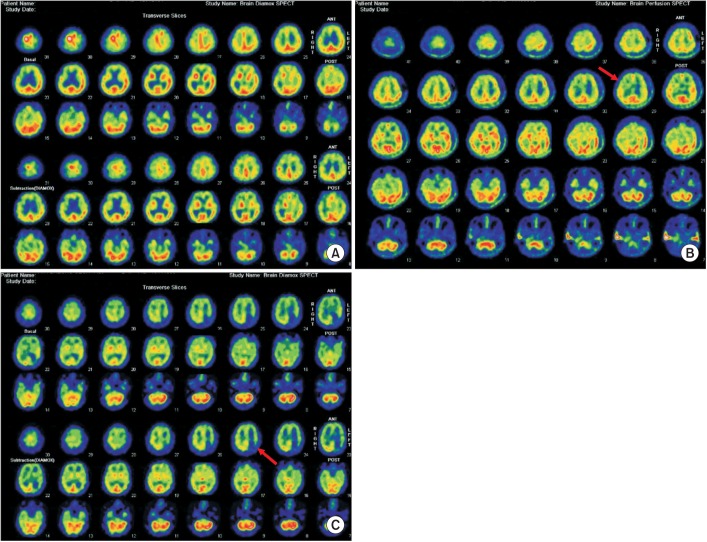
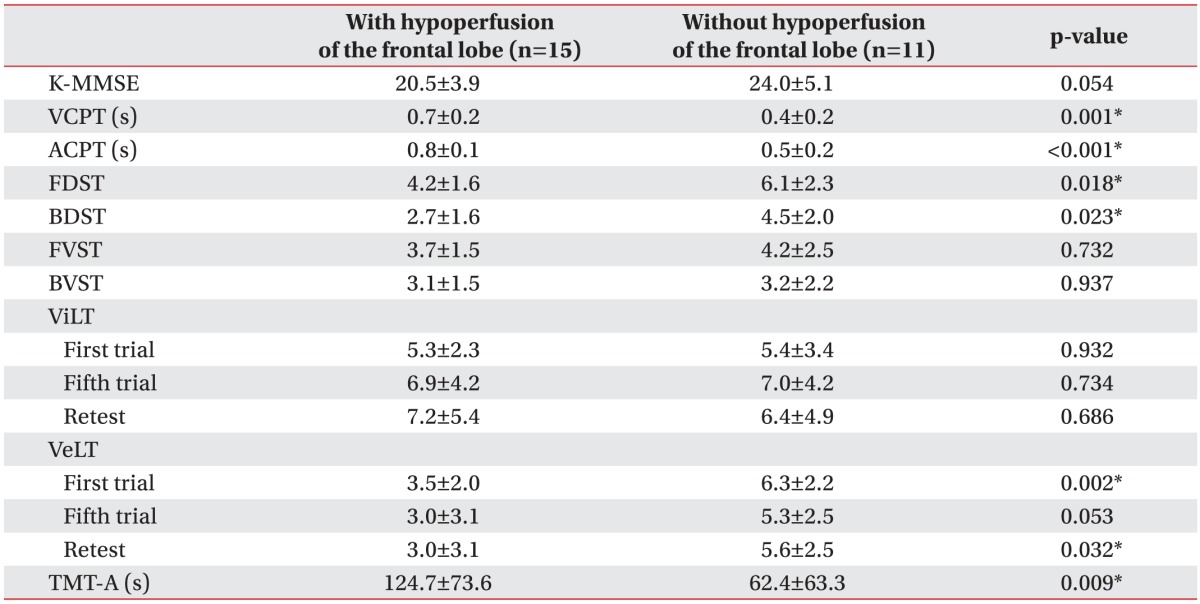
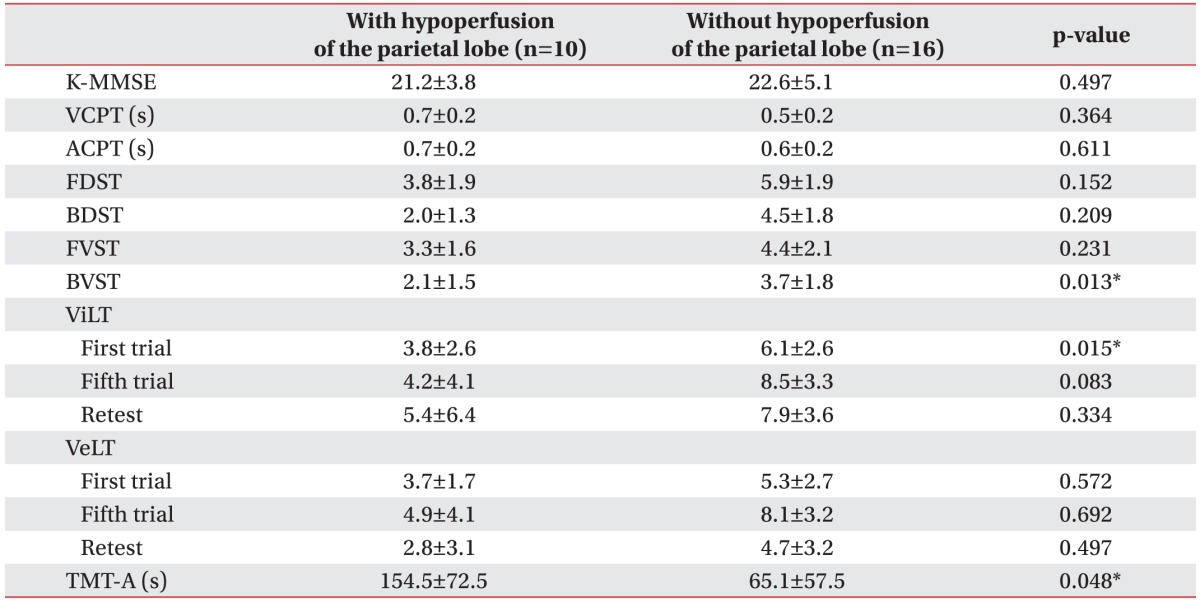




 PDF
PDF ePub
ePub Citation
Citation Print
Print



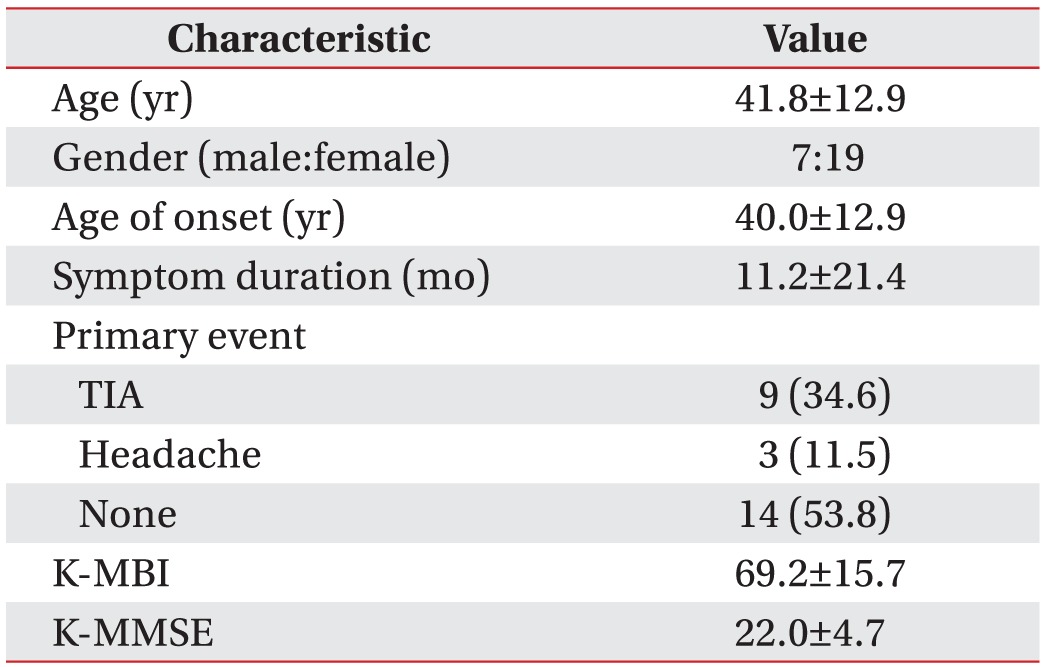
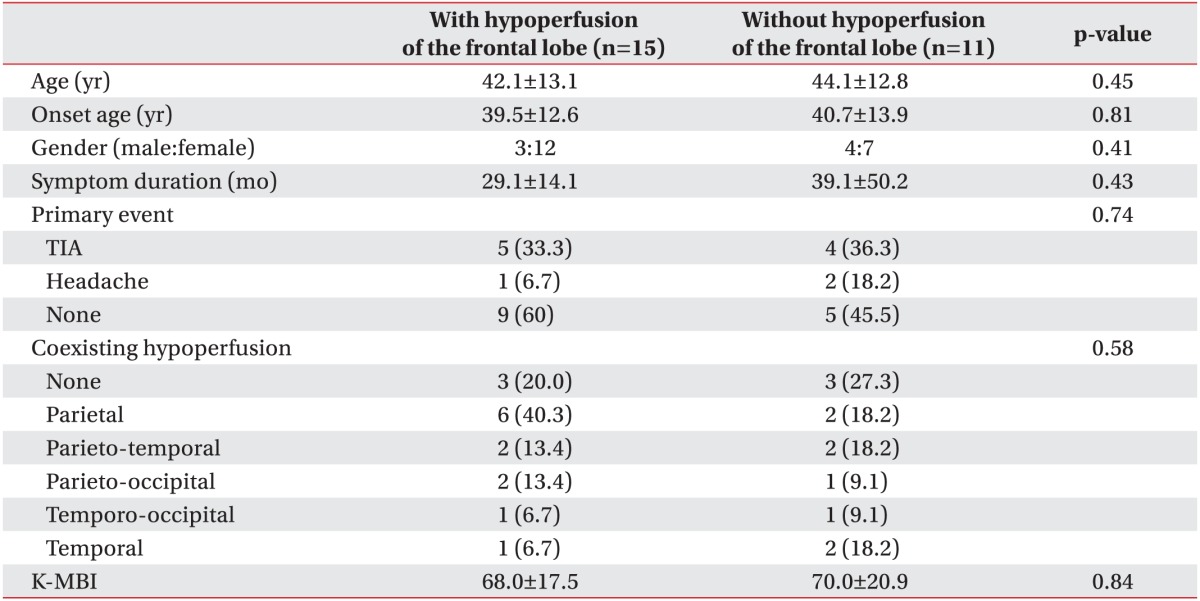
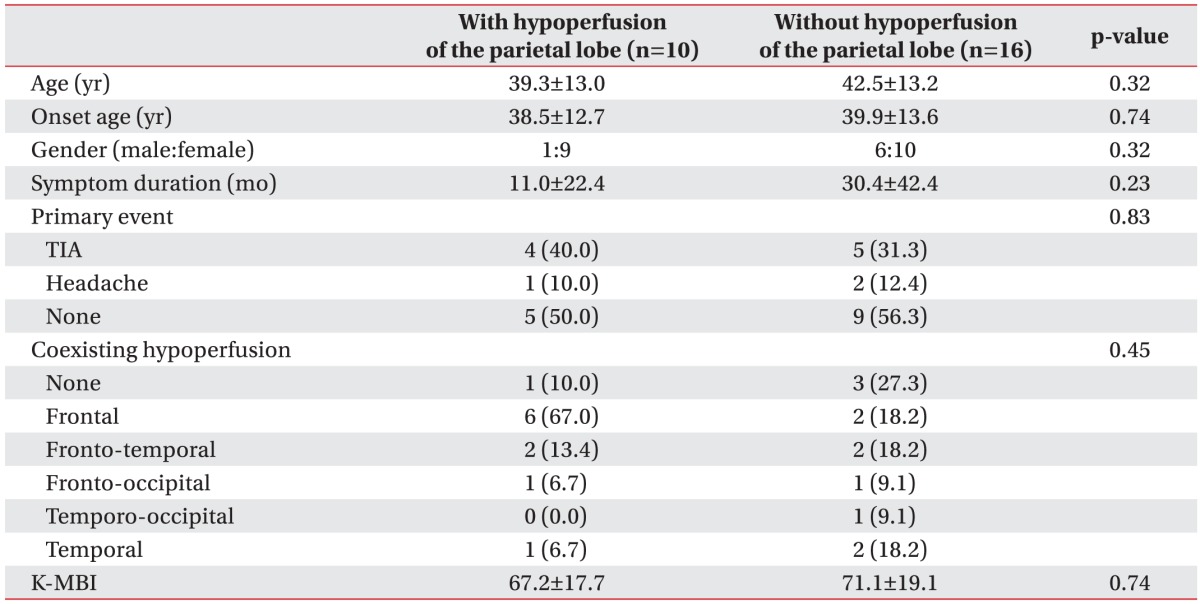
 XML Download
XML Download